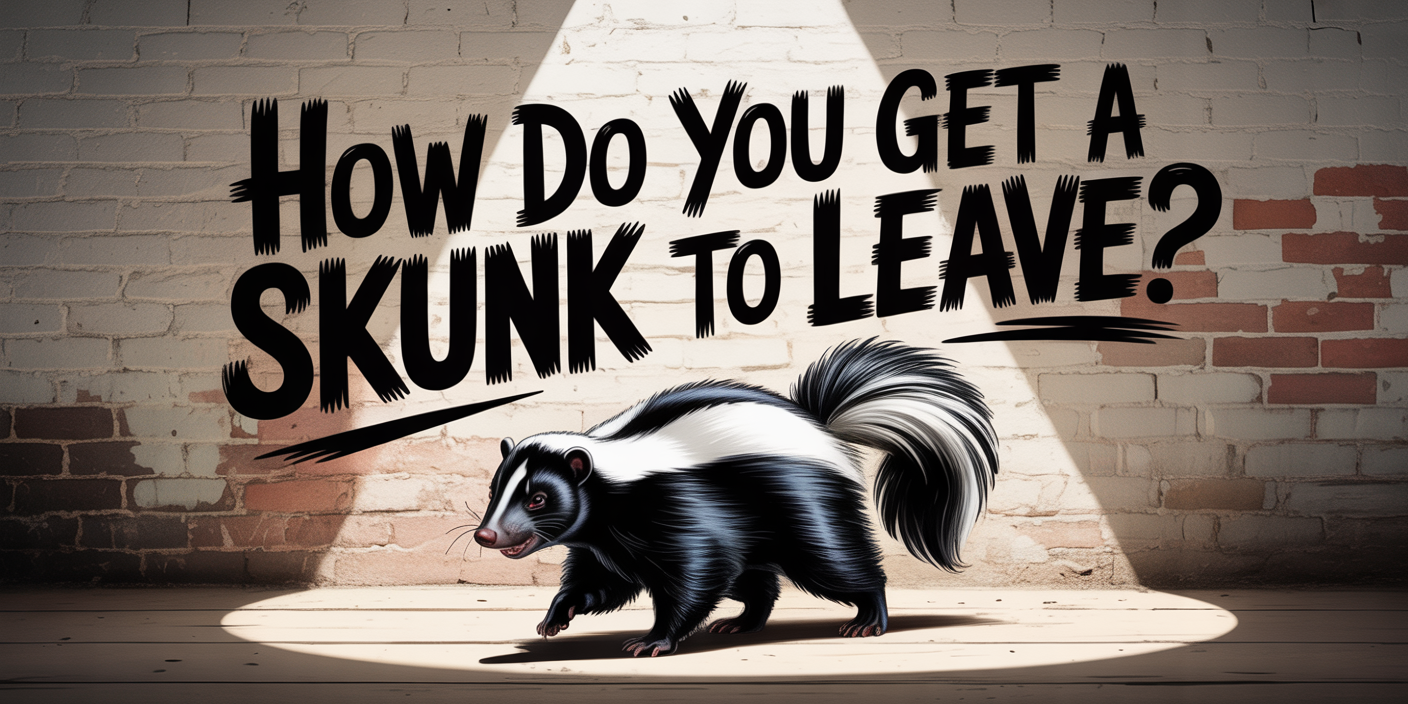To get rid of a skunk living under your porch, first confirm it’s there, then use humane exclusion methods like one-way doors or gentle deterrents to encourage it to leave. Once it’s gone, seal all entry points with buried mesh or barriers to keep it from coming back.
You know that unmistakable smell—and now it’s coming from under your porch. When a skunk sets up camp on your property, it’s more than just a nose-pinching nuisance. These animals can dig, damage insulation, and carry diseases like rabies, not to mention the risk of getting sprayed if you accidentally startle one.
That’s where professional skunk removal comes in. Trying to trap or evict a skunk on your own can lead to a stinky disaster. AAAC Wildlife Removal offers safe, humane solutions to remove skunks without the mess or stress, so you can breathe easy again.
Learn more: How do I get rid of a skunk living under my porch?
What Attracts Skunks to Porches and Decks?
Skunks look for quiet, sheltered spaces to build dens, especially in early spring and fall. Your porch or deck offers a perfect hideout—dark, dry, and protected from predators. If there’s a gap in the foundation or a low-hanging structure, it’s basically a “vacancy” sign for skunks.
They’re also drawn to easy meals. Pet food left outside, open trash bins, compost piles, or even birdseed can lure a hungry skunk in. Once they find food and shelter in the same place, they’re likely to stick around. Removing these temptations is one of the first steps in keeping them out.
How Can You Tell If a Skunk Is Living Under Your Porch?
One of the most obvious signs is that distinct skunky odor wafting near your deck or foundation, especially at night when they’re most active. You might also notice small holes or disturbed soil around the perimeter, which skunks dig while foraging or creating entryways to their den.
Other clues include scattered droppings, scratch marks, or even the sound of rustling beneath the porch after dark. In some cases, you might spot the skunk itself waddling in or out around dusk or dawn. Confirming its presence before taking action is crucial—especially if there are babies involved, since separating them can lead to even more problems.
Is It Safe to Remove a Skunk Yourself?
Trying to remove a skunk on your own can be risky. These animals spray when they feel cornered or threatened, and getting hit with that odor at close range is no joke—it’s hard to clean, lingers for days, and can even cause temporary blindness if it hits the eyes.
There’s also the legal side to consider. In many areas, relocating wildlife without a permit is illegal, and improper handling can expose you to bites, parasites, or rabies risk. Unless you’re trained and equipped, it’s safer (and way less smelly) to call in a professional who knows how to handle skunks humanely and legally.
What Are Humane Ways to Get a Skunk Out?
If the skunk hasn’t sprayed and there are no babies involved, you can try gentle, non-threatening methods to encourage it to leave. One-way exclusion doors are especially effective—they let the skunk exit but prevent re-entry. You can also try playing a radio near the den, placing ammonia-soaked rags outside the entrance, or setting up motion-activated lights to make the space less inviting.
The key is consistency and patience. Never try to flood, smoke out, or physically prod the skunk—those methods are dangerous, ineffective, and often illegal. If it’s breeding season, be extra cautious. Removing a mother skunk while babies are still under the porch can leave you with an even bigger problem (and a lot of noise).
Should You Trap a Skunk?
Live trapping might seem like a quick fix, but it often creates more problems than it solves. Skunks are easily startled and will spray inside the trap if they feel threatened, leaving you with a stinky situation to clean up. Plus, many areas have laws that prohibit relocating wild animals without proper authorization.
Even if trapping is legal where you live, doing it wrong can result in injury to you or the animal. Timing also matters—if babies are in the den, trapping the adult can leave them behind. Professional trappers have the experience and tools to do it right, minimizing stress on the skunk and reducing risk to you and your property.
How Do You Seal Off the Area to Prevent Return?
Once you’re sure the skunk has left, it’s critical to seal up the entry point so another one doesn’t move in. Use hardware cloth or welded wire mesh to cover all gaps and bury it at least 12 inches underground, bent outward in an L-shape to prevent digging. This creates a physical barrier skunks can’t bypass, even if they try.
Make sure to inspect the entire perimeter of your porch or deck for any other openings they could use. Patch up cracks, gaps, or rotted wood that might give them access. If you seal too early and trap a skunk inside, you’ll have a serious (and smelly) problem on your hands. That’s why exclusion should always follow proper eviction.
How Do You Get Rid of Skunk Smell Around the Porch?
That musky skunk odor can linger for days or even weeks if not treated properly. A popular homemade solution includes a mix of hydrogen peroxide, baking soda, and a bit of dish soap—this breaks down the oils in the spray and helps neutralize the stench on decks, walls, or even pets if they got too close.
For heavy-duty odor or spray that’s soaked into wood or soil, commercial enzyme-based cleaners often work better. In some cases, you might need to replace contaminated mulch or scrub down porous surfaces multiple times. Ventilating the area and avoiding bleach (which can worsen the smell) will also help speed up the cleanup.
When Should You Call a Professional?
If the skunk refuses to leave, has babies under the porch, or you’re dealing with strong odors and property damage, it’s time to call a wildlife removal expert. Professionals have the training and tools to safely evict skunks without triggering a spray, and they can inspect for hidden nests or entry points you might miss.
They also handle exclusion work, cleanup, and odor control—saving you the headache of figuring it all out on your own. In many cases, hiring a pro is not just the safer option, but also the most cost-effective way to fix the problem for good. Don’t wait until the smell is unbearable or a skunk sprays your dog—get help early.
Call AAAC Wildlife Removal for Safe, Humane Skunk Removal
If you’ve got a skunk living under your porch, don’t risk getting sprayed—or making things worse—with a DIY approach. At AAAC Wildlife Removal, we specialize in humane skunk removal that gets results fast while keeping your property, family, and the animal safe.
Our team will inspect your porch, remove the skunk without harm, seal off access points, and help eliminate lingering odors. With expert tools and local know-how, we’ll make sure the problem is solved for good. Give us a call today and take back your porch—no traps, no stink, no stress.
Conclusion
Skunks might seem harmless, but once they’ve made themselves at home under your porch, they bring odor, mess, and health risks with them. The longer you wait, the harder they are to remove—especially if babies are involved or if they’ve started to dig and nest deeply.
With a combination of smart prevention, humane deterrents, and professional backup when needed, you can reclaim your space and avoid any nasty surprises. Don’t wait for that telltale smell to get stronger—handle the problem early and keep your porch skunk-free for good.




